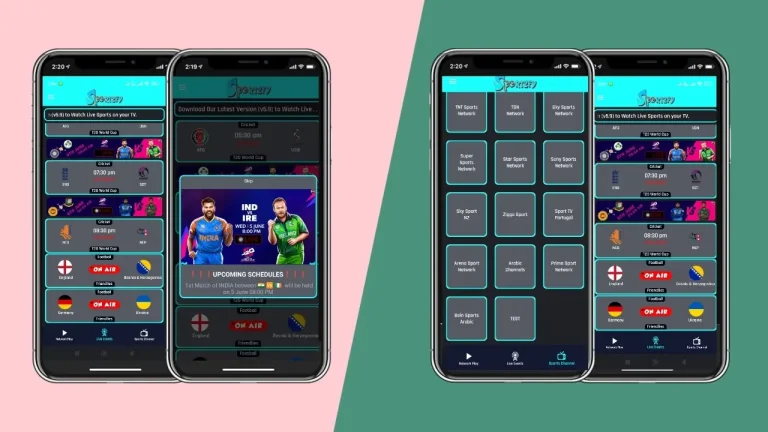Human Resource Life Insurance 2025
Human Resource Life Insurance
- Introduction to HR Life Insurance
- Definition and relevance in employee benefits
- The role of HR in managing life insurance policies
- Importance of Life Insurance in the Workplace
- Providing financial security to employees’ families
- Boosting employee morale and retention
- Types of Life Insurance Offered by Employers
- Group term life insurance
- Whole life insurance plans
- Supplemental life insurance
- Global Trends in HR Life Insurance
- Increasing focus on mental health-linked policies
- Growth of personalized and portable plans
- Emphasis on sustainable and socially responsible policies
- Regional Variations in Life Insurance
- United States: Employer-sponsored term life policies
- Europe: Government-backed benefits and private plans
- Asia-Pacific: Cultural perspectives influencing life insurance adoption
- Key Features of Comprehensive HR Life Insurance Plans
- Adequate coverage amounts
- Dependent coverage options
- Accidental death and dismemberment benefits
- HR’s Role in Implementing Life Insurance Programs
- Choosing the right provider
- Educating employees about benefits
- Addressing employee queries and concerns
- Challenges in Managing HR Life Insurance Globally
- Balancing costs and benefits
- Compliance with local regulations
- Ensuring inclusivity and fairness
- Technology’s Role in HR Life Insurance
- AI for assessing employee needs
- Blockchain for transparent claim management
- Mobile apps for policy management
- Impact of COVID-19 on HR Life Insurance
- Increased awareness about life insurance
- Enhanced focus on mental health and well-being
- Flexibility in coverage options
- Life Insurance for Remote and Freelance Workers
- Challenges in providing coverage
- Customizable options for gig and remote employees
- The role of global insurers
- The Role of Life Insurance in Employee Retention
- Building trust and loyalty
- Competitive advantage in talent acquisition
- Strengthening employer-employee relationships
- Sustainable and Ethical Life Insurance Policies
- ESG (Environmental, Social, Governance) principles in life insurance
- Promoting eco-friendly investments through premiums
- Future of HR Life Insurance
- Rise of digital-first policies
- Integration with other employee benefits
- Predictive analytics for tailored solutions
- Conclusion and Recommendations
- Recap of global trends and challenges
- Call to action for HR professionals
Introduction to HR Life Insurance
Life insurance has become a vital component of employee benefits, playing a key role in safeguarding employees and their families against unforeseen financial hardships. Human Resource (HR) departments are responsible for designing and managing these life insurance policies, ensuring that employees are adequately covered while aligning with organizational goals.
By incorporating life insurance into their benefits packages, companies demonstrate a commitment to their employees’ well-being, fostering loyalty and trust.
Importance of Life Insurance in the Workplace
Why is life insurance so critical in today’s workplace? Simply put, it offers peace of mind. Employees can focus on their work, knowing their loved ones are financially secure in case of an unexpected event.
From an employer’s perspective, life insurance enhances workplace morale and serves as a powerful retention tool. It helps attract top talent in competitive industries while ensuring current employees feel valued. In fact, a comprehensive life insurance policy often serves as a distinguishing factor in a company’s benefits package.
Types of Life Insurance Offered by Employers
Employers globally offer a variety of life insurance options tailored to meet diverse employee needs:
- Group Term Life Insurance: This is the most common type, providing coverage for employees at minimal or no cost.
- Whole Life Insurance Plans: These policies offer lifetime coverage and an investment component, though they come at a higher cost.
- Supplemental Life Insurance: Employees can opt for additional coverage, often extending to dependents, by paying extra premiums.
The variety ensures that employees have the flexibility to choose plans that suit their personal and family needs.
Global Trends in HR Life Insurance
Life insurance policies are evolving to reflect changing employee expectations and global developments. Key trends include:
- Mental Health Benefits: Insurers are incorporating mental health-related claims into life insurance, acknowledging the rising prevalence of mental health issues.
- Personalized Plans: Employees increasingly expect customizable options that align with their unique life stages and needs.
- Sustainable Policies: Companies are partnering with insurers that invest premiums into socially responsible initiatives.
These trends highlight the growing importance of innovation and flexibility in life insurance offerings.
Regional Variations in Life Insurance
- United States: Employer-sponsored group term life insurance is prevalent, often with supplemental options for additional coverage.
- Europe: Many countries offer robust government-backed benefits, supplemented by private life insurance plans.
- Asia-Pacific: Cultural factors significantly influence the adoption of life insurance, with family-centric policies being particularly popular in countries like India and China.
Each region’s approach underscores the importance of understanding cultural and regulatory contexts when designing HR life insurance policies.
Key Features of Comprehensive HR Life Insurance Plans
A robust life insurance policy includes several essential features:
- Adequate Coverage: Ensuring the payout sufficiently supports employees’ families.
- Dependent Coverage: Allowing employees to extend coverage to spouses, children, or other dependents.
- Accidental Death Benefits: Additional payouts in case of accidental death or severe injury.
Such features make life insurance a valuable and reassuring benefit for employees worldwide.
HR’s Role in Implementing Life Insurance Programs
HR professionals play a crucial role in bringing life insurance programs to life. Their responsibilities include:
- Selecting Providers: HR must vet insurance providers for reliability, flexibility, and cost-effectiveness.
- Employee Education: Many employees are unaware of the full benefits of life insurance. HR must simplify the information and make it accessible.
- Feedback Collection: Regular feedback ensures that the offered policies meet employee expectations and remain competitive.
Proactive HR teams are the backbone of successful life insurance programs.
Challenges in Managing HR Life Insurance Globally
Providing life insurance across multiple regions comes with challenges, such as:
- Balancing Costs: Striking a balance between offering generous benefits and managing budgets.
- Regulatory Compliance: Adhering to local insurance laws and regulations.
- Inclusivity: Ensuring that life insurance policies cater to diverse employee demographics.
Overcoming these hurdles requires careful planning and collaboration with global insurance providers.
Technology’s Role in HR Life Insurance
Technology is reshaping how life insurance is managed:
- AI for Personalized Policies: Artificial intelligence can analyze employee data to suggest tailored coverage options.
- Blockchain for Transparency: Ensures secure and tamper-proof claims processing.
- Mobile Apps: Provide employees with easy access to their policy details and benefits.
These advancements enhance efficiency and employee engagement.
Impact of COVID-19 on HR Life Insurance
The pandemic significantly increased awareness about life insurance. Employers responded by:
- Expanding coverage to include pandemic-related risks.
- Introducing flexible plans to accommodate diverse employee needs.
- Increasing focus on employee mental and physical well-being.
This shift has made life insurance a cornerstone of modern HR strategies.
Conclusion and Recommendations
HR life insurance programs are essential for employee well-being and organizational success. By offering flexible, comprehensive, and innovative life insurance policies, HR teams can build trust, enhance morale, and position their organizations as employers of choice.
FAQs
- What types of life insurance are commonly offered by employers?
Group term life insurance, whole life insurance, and supplemental options are the most common. - How does life insurance benefit employees?
It provides financial security for employees’ families in case of unexpected events, reducing stress and boosting morale. - What challenges do HR teams face in managing life insurance?
Balancing costs, ensuring compliance, and addressing diverse employee needs are major challenges. - How has technology impacted life insurance?
AI, blockchain, and mobile apps have enhanced policy customization, transparency, and accessibility. - What global trends are shaping life insurance?
Trends include mental health benefits, personalized plans, and a focus on sustainable investments.





